
Filter News
Area of Research
- (-) Fusion and Fission (55)
- (-) Neutron Science (212)
- (-) Nuclear Systems Modeling, Simulation and Validation (3)
- (-) Supercomputing (319)
- Advanced Manufacturing (34)
- Biological Systems (18)
- Biology and Environment (180)
- Biology and Soft Matter (5)
- Building Technologies (12)
- Chemical and Engineering Materials (4)
- Chemistry and Physics at Interfaces (11)
- Computational Biology (6)
- Computational Chemistry (5)
- Computational Engineering (5)
- Computer Science (19)
- Data (1)
- Electricity and Smart Grid (3)
- Energy Frontier Research Centers (14)
- Energy Science (526)
- Energy Sciences (5)
- Fossil Energy (3)
- Fuel Cycle Science and Technology (3)
- Functional Materials for Energy (16)
- Fusion Energy (19)
- Geographic Information Science and Technology (3)
- Isotope Development and Production (3)
- Isotopes (36)
- Materials (433)
- Materials Characterization (2)
- Materials for Computing (36)
- Materials Synthesis from Atoms to Systems (13)
- Materials Under Extremes (12)
- Mathematics (1)
- National Security (80)
- Neutron Data Analysis and Visualization (4)
- Nuclear Science and Technology (75)
- Nuclear Systems Technology (1)
- Quantum Condensed Matter (4)
- Quantum information Science (9)
- Reactor Technology (1)
- Sensors and Controls (5)
- Transportation Systems (11)
News Type
News Topics
- 3-D Printing/Advanced Manufacturing (12)
- Advanced Reactors (9)
- Artificial Intelligence (40)
- Big Data (23)
- Bioenergy (15)
- Biology (16)
- Biomedical (29)
- Biotechnology (2)
- Buildings (5)
- Chemical Sciences (11)
- Clean Water (2)
- Composites (2)
- Computer Science (99)
- Coronavirus (19)
- Critical Materials (4)
- Cybersecurity (9)
- Education (1)
- Energy Storage (17)
- Environment (30)
- Exascale Computing (27)
- Fossil Energy (2)
- Frontier (34)
- Fusion (23)
- Grid (7)
- High-Performance Computing (45)
- Hydropower (1)
- Isotopes (3)
- ITER (6)
- Machine Learning (17)
- Materials (28)
- Materials Science (34)
- Mathematics (2)
- Microscopy (9)
- Molten Salt (1)
- Nanotechnology (20)
- National Security (8)
- Neutron Science (122)
- Nuclear Energy (34)
- Partnerships (4)
- Physics (18)
- Polymers (3)
- Quantum Computing (20)
- Quantum Science (30)
- Security (7)
- Simulation (19)
- Software (1)
- Space Exploration (5)
- Summit (43)
- Transportation (12)
Media Contacts


Using nondestructive neutron scattering techniques, scientists are examining how single-celled organisms called cyanobacteria produce oxygen and obtain energy through photosynthesis.

The U.S. Department of Energy’s Office of Science announced 55 projects with high potential for accelerating discovery through its Innovative and Novel Computational Impact on Theory and Experiment (INCITE) program. The projects will share 5.95 billion core-hours on t...
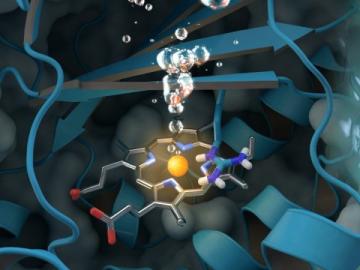
A new study sheds light on a unique enzyme that could provide an eco-friendly treatment for chlorite-contaminated water supplies and improve water quality worldwide. An international team of researchers led by Christian Obinger from the University of Vienna used neutron analys...
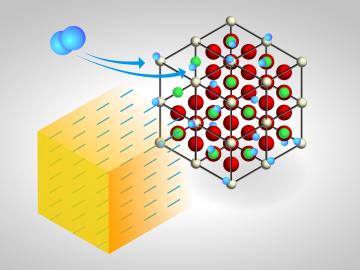
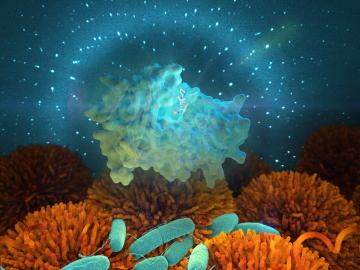
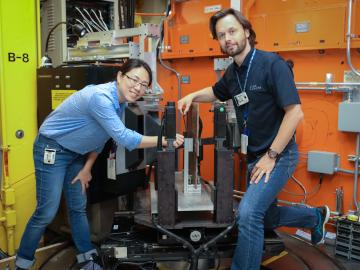
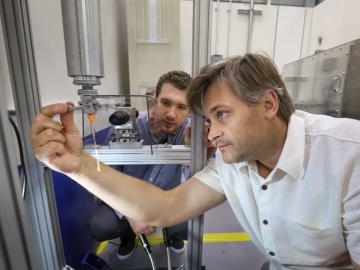

The Big Bang began the formation and organization of the matter that makes up ourselves and our world. Nearly 14 billion years later, nuclear physicists at the Department of Energy’s Oak Ridge National Laboratory (ORNL) and their partners are using America’s most powerful supercomp...

The field of “Big Data” has exploded in the blink of an eye, growing exponentially into almost every branch of science in just a few decades. Sectors such as energy, manufacturing, healthcare and many others depend on scalable data processing and analysis for continued in...


